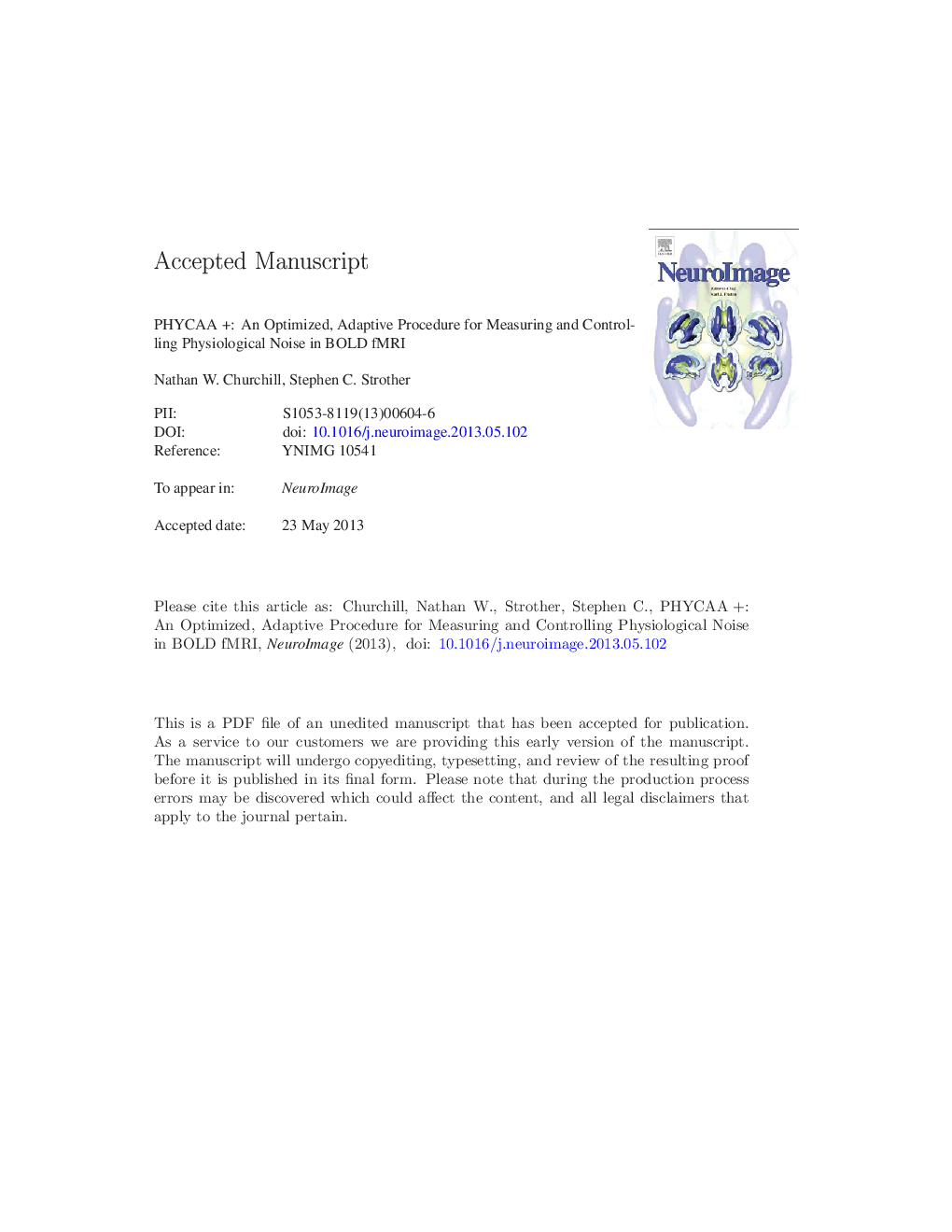| Article ID | Journal | Published Year | Pages | File Type |
|---|---|---|---|---|
| 6028933 | NeuroImage | 2013 | 60 Pages |
Abstract
The presence of physiological noise in functional MRI can greatly limit the sensitivity and accuracy of BOLD signal measurements, and produce significant false positives. There are two main types of physiological confounds: (1) high-variance signal in non-neuronal tissues of the brain including vascular tracts, sinuses and ventricles, and (2) physiological noise components which extend into gray matter tissue. These physiological effects may also be partially coupled with stimuli (and thus the BOLD response). To address these issues, we have developed PHYCAAÂ +, a significantly improved version of the PHYCAA algorithm (Churchill et al., 2011) that (1) down-weights the variance of voxels in probable non-neuronal tissue, and (2) identifies the multivariate physiological noise subspace in gray matter that is linked to non-neuronal tissue. This model estimates physiological noise directly from EPI data, without requiring external measures of heartbeat and respiration, or manual selection of physiological components. The PHYCAAÂ + model significantly improves the prediction accuracy and reproducibility of single-subject analyses, compared to PHYCAA and a number of commonly-used physiological correction algorithms. Individual subject denoising with PHYCAAÂ + is independently validated by showing that it consistently increased between-subject activation overlap, and minimized false-positive signal in non gray-matter loci. The results are demonstrated for both block and fast single-event task designs, applied to standard univariate and adaptive multivariate analysis models.
Related Topics
Life Sciences
Neuroscience
Cognitive Neuroscience
Authors
Nathan W. Churchill, Stephen C. Strother,
